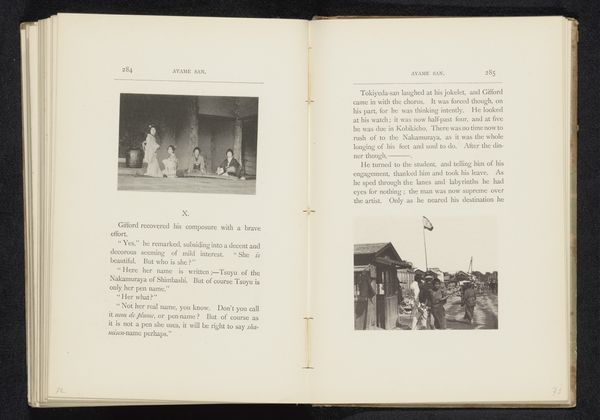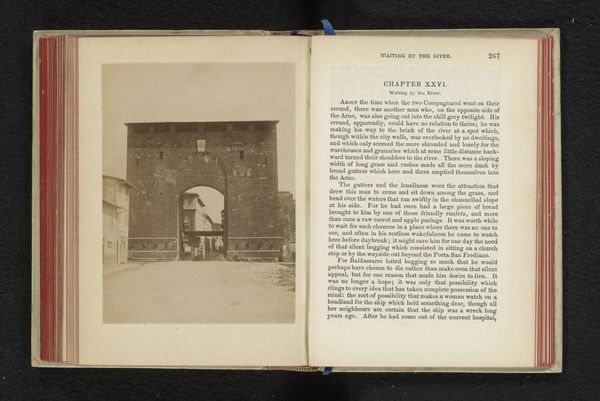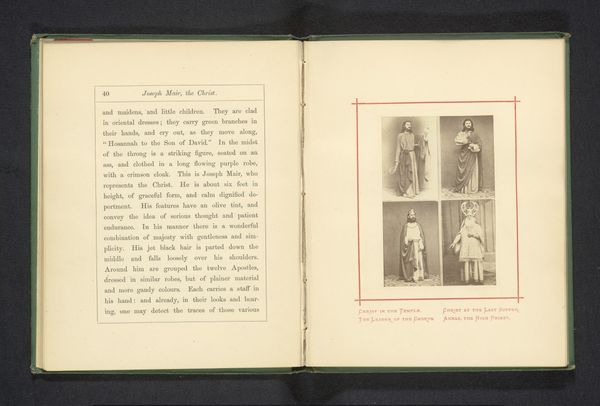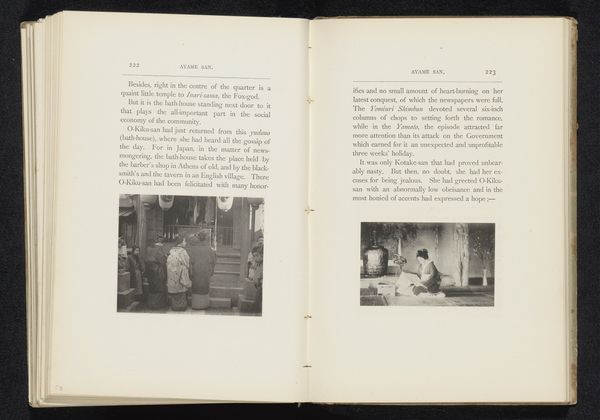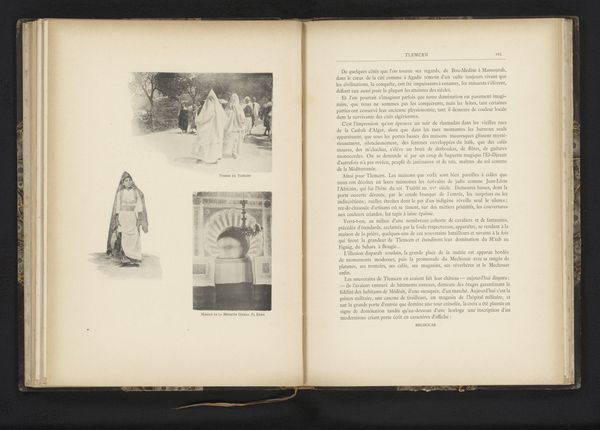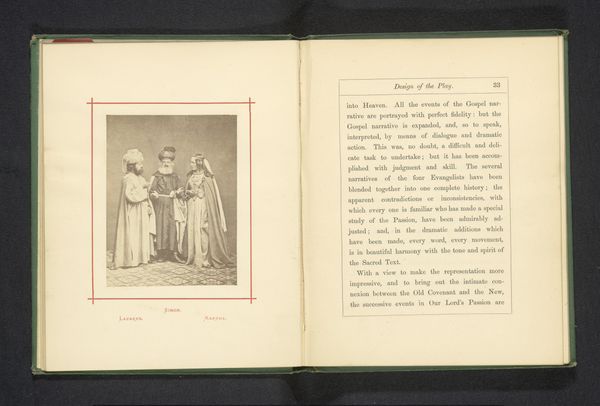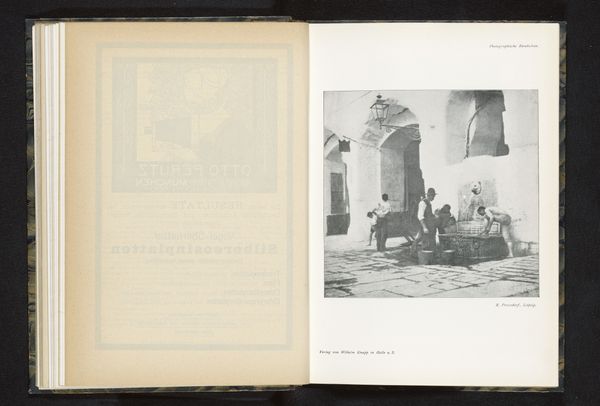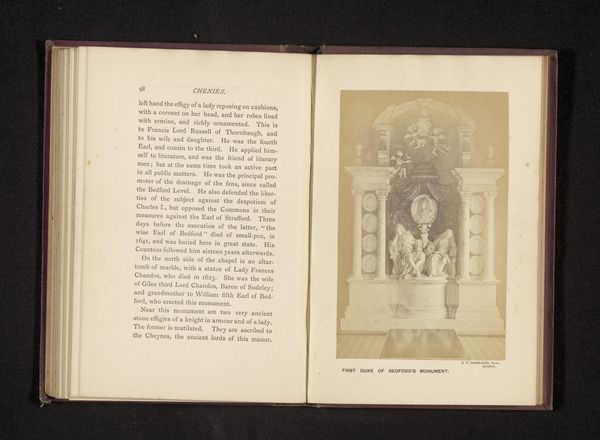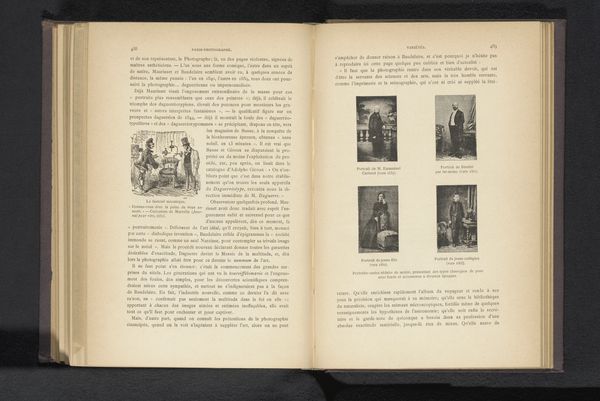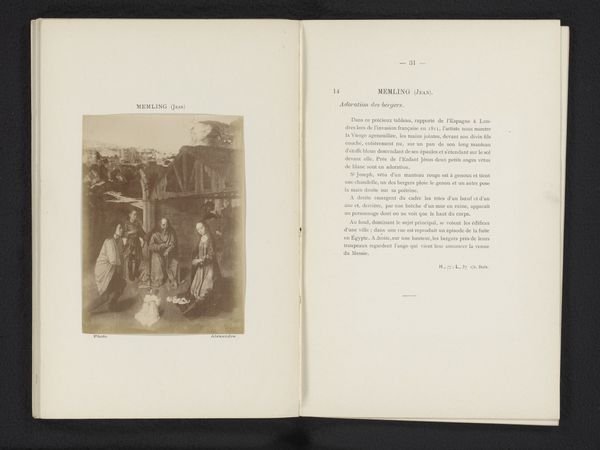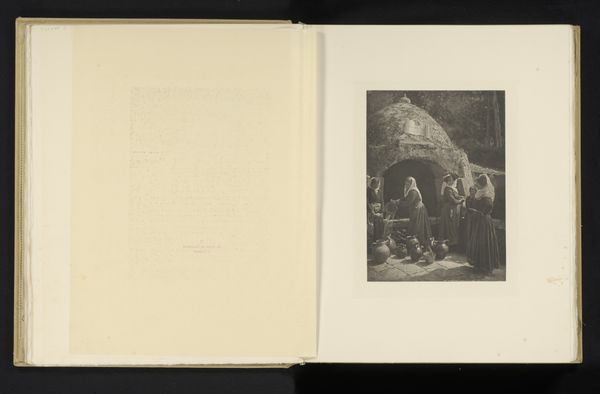
photography
#
portrait
#
photography
Dimensions: height 61 mm, width 72 mm
Copyright: Rijks Museum: Open Domain
Curator: Before us we have a page from a photo-book titled "Ayame San", including photographs by Kazumasa Ogawa, dating from before 1892. Here we see three women indoors. Two stand as if in the midst of dance, while a third woman kneels beside them. The photo is tinted in shades of gray and cream. What's your initial read on this composition? Editor: The first thing that strikes me is how staged and performative the photograph feels. The dancers appear to be actively presenting themselves to be consumed by a specific audience, or a Western gaze if we consider the textual context in the adjacent page and the description of Gilford's consuming gaze on "Ayame San." The black and white, coupled with their traditional attire, further emphasizes a studied exoticism. Curator: Yes, that calculated presentation certainly comes through. Ogawa, as a prominent photographer of his time, often navigated the space between artistic expression and the expectations of his Western clientele. The way these photographs were mass-produced and circulated speaks to the broader phenomenon of Japonisme and the West's fascination with Japanese culture. Editor: And how that fascination so often verged on appropriation. Thinking about that audience really frames this image differently. The photograph's existence is predicated on its reception by an external "other" who holds the power to interpret and categorize what's presented to them, in order to exert an additional form of control, not by other means. This "dramatic performance" plays out between those cultural tensions. It’s important to think about how photography can simultaneously capture and construct cultural narratives. Curator: Absolutely. What appears on the surface as an innocuous snapshot is laden with social and political weight. The "three dancing women" might, in essence, perform the commodification of culture, where artistic integrity dances with Western desire, revealing the complexity inherent in cultural exchange during this historical period. Editor: That dance becomes even more complex when considering issues around gender, agency, and performance. The photograph allows for discussions about how identity is performed and perceived in various cultural contexts. It also offers opportunities to unpack representation—or perhaps misrepresentation—that further perpetuate orientalist fantasies. Curator: It seems we both depart with a profound sense of photography’s capabilities. It does capture an image while constructing a reality that needs critical contextualization. Thank you. Editor: Indeed. By diving into this book spread, we acknowledge not only the art itself but also how power and perspective influence that creative vision.
Comments
No comments
Be the first to comment and join the conversation on the ultimate creative platform.
